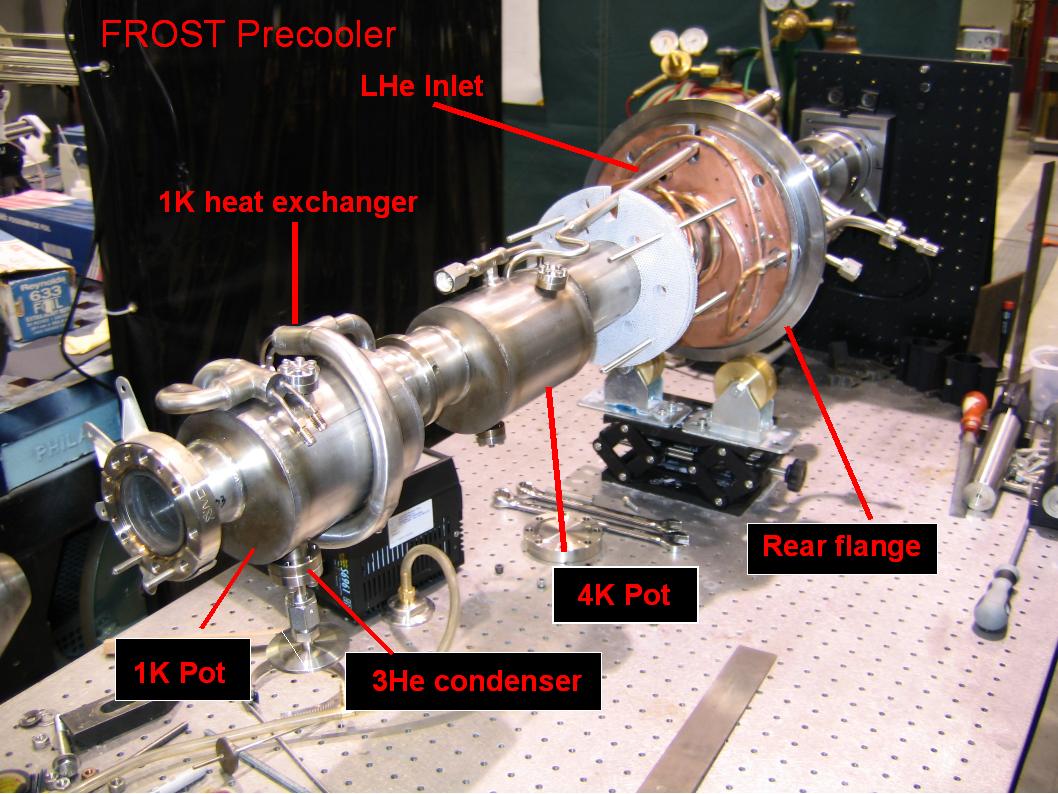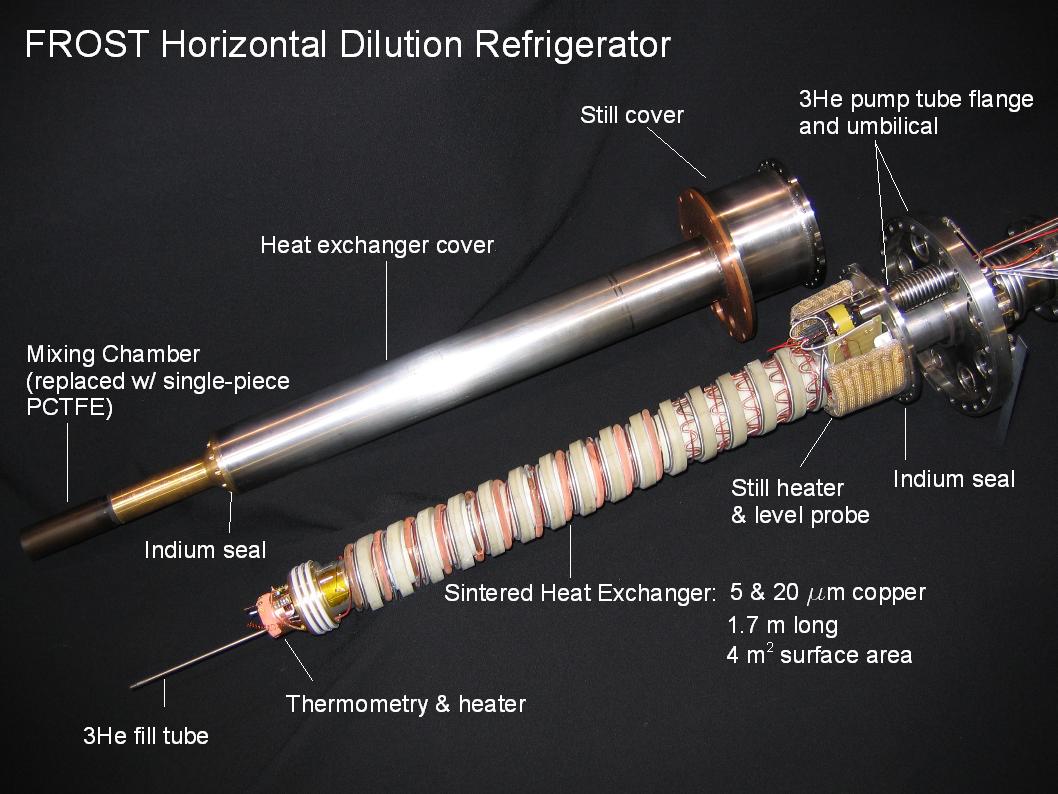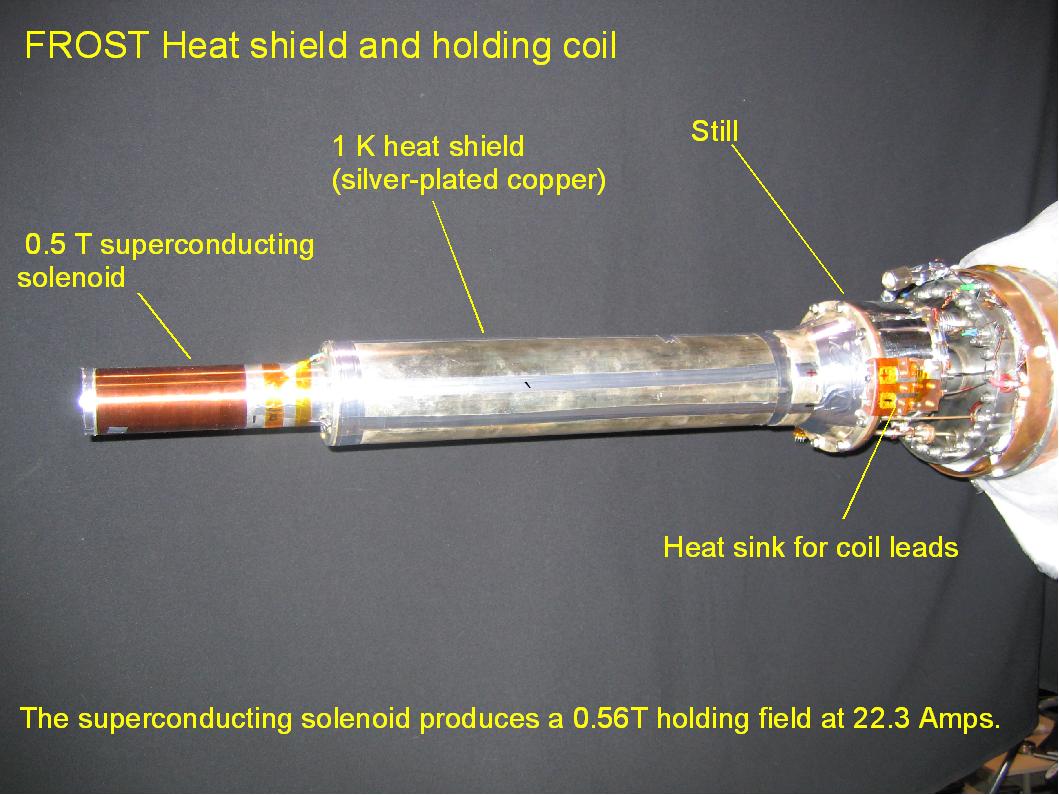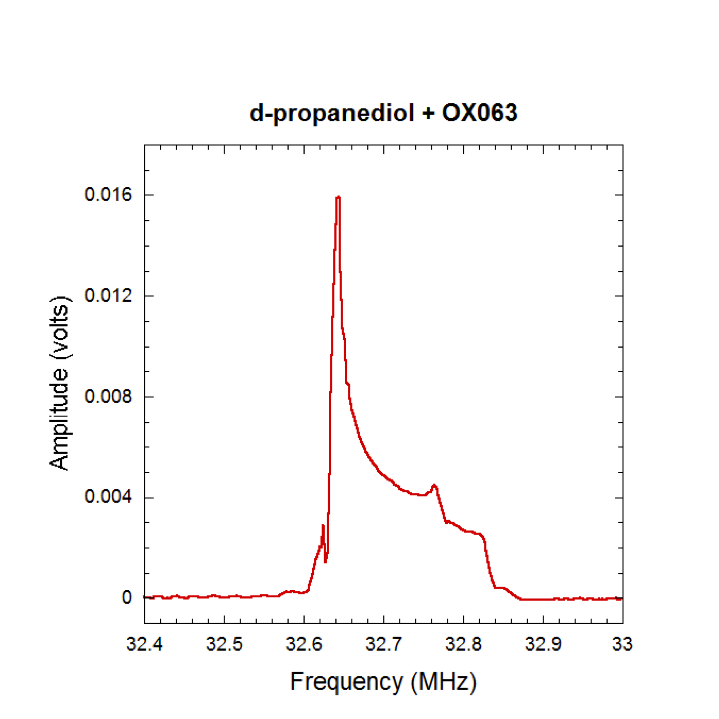
Precooling unit, early in construction. A vacuum flange is attached to the 3He condensor for leak checking. The precooler slides into the large 3He pumping tube. It was designed to provide optimal heat sinking for the target insert, a problem that was later obviated by the improved design of our "zero heat load" insert" (see below).

The dilution unit with cover removed. We had leaks with the glue joint between the PCTFE and brass parts of the mixing chamber, so we replaced it with a single PCTFE mixer. The heat exchanger design is copied from Niinikoski (CERN). I found it easier to construct compared to the silver heat exchangers of Frossati (Leiden).

The mixing chamber is machined from a single piece of PCTFE ("Kel-F") and attaches to the cover for heat exchanger via an indium o-ring. The microwave waveguide is located beneath the mixing chamber, while a two-turn NMR coil for monitoring the polarization in Frozen Spin mode is attached to the mixing chamber's side. A similar, one-turn coil is located on the opposite side of the mixer and is used during the polarization process. FEP heat shrink is used to hold the NMR coils in place.

Close-up of the still and heat exchanger. The electrodes of Amy Comer's level probe consist of horizontal stripes so that the capacitance increases in a stair-step manner as liquid fills the still. The liquid level is gauged by simply counting the steps!

Rather late in the game, I realized that the target insert could be made to present zero heat load on the mixing chamber. The sealing mechanism is James Brock's clever design.

The holding coil, designed by Mike Seely, is wound around a 1 mm thick aluminum tube which bolts onto the end of the 1K heat shield. The heat shield is thermally sunk to the still.
The polarized target material consists of 1.5 mm beads of frozen Butanol doped with the paramagnetic radical TEMPO. They are contained within a 15 x 50 mm Kel-F cup. Here the beads have just been loaded into the cup (under liquid nitrogen) and are ready to be attached to the target insert.
This photograph shows the amber-colored butanol beads alongside a millimeter ruler. The heat deposited into an individual bead both by the microwaves and the photon beam scales as the volume of the bead, while the cooling efficiency scales as the bead's surface area. Smaller beads are preferred as they have a higher surface-to-volume ratio.
Here is the target installed in Hall B. The cryostat is inserted in the polarizing magnet on the far right. In the foreground Mike Seely, then head of the JLab Target Group, is explaining how things work to Prof. Ken Livingston of the University of Glasgow.

Another photo of the target in Hall B. Here the cryostat is being inserted into the bore of the polarizing magnet. Chris Keith lends a helping hand.

Bellows-sealed needle valve assembly. Three of these
valves are used to control the flow of liquid 3He and liquid 4He in the dilution fridge and precooler. This is the coarse-flow valve for precooling the mixing chamber.

Electron microscope photograph of silver powder after sintering (270 C). Very high surface areas can be achieved using fine silver powder, but I abandoned this material when I failed to manufacture heat exchangers with the tightly coiled geometry I required. Using slightly coaser copper powders, sintered at 870 C, worked very well.

A side-by-side photo showing both holding coils that were used during the FROST experiments. The saddle-shaped dipole (top) was used at 0.50 T during the g9b experiments, and the solenoid (bottom) was used at 0.56 T during g9a.

Electron microscope photo of the 325-mesh copper powder used in the sintered heat exchanger. About half of the heat exchanger sections used this powder, and the other half used sintered 5 um copper powder.

At the conclusion of the g9b experiment, we replaced the TEMPO-doped butanol sample with fully-deuterated propanediol. This sample was doped with the trityl radical OX063 and polarized at 5 T and 250 mK. A deuteron polarization of -87% +/- 3% was obtained after about 16 hours.

Polarization growth of the d-propanediol sample. The ordinate values should be multiplied by approximately 2 in order to obtain sample polarization. A polarization of -80% could be reached after about 6 hours of microwave irradiation and 87% after 16 hours.
